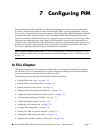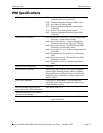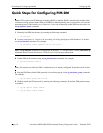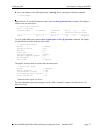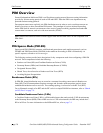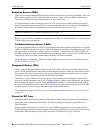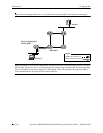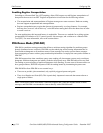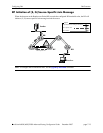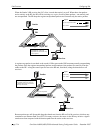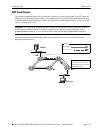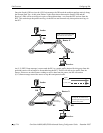
Configuring PIM PIM Overview
OmniSwitch 6800/6850/9000 Advanced Routing Configuration Guide December 2007 page 7-9
Bootstrap Routers (BSRs)
The role of a Bootstrap Router (BSR) is to keep routers in the network up to date on reachable C-RPs. The
BSR’s list of reachable C-RPs is also referred to as an RP set. There is only one BSR per PIM domain.
This allows all PIM routers in the PIM domain to view the same RP set.
A C-RP periodically sends out messages, known as C-RP advertisements. When a BSR receives one of
these advertisements, the associated C-RP is considered reachable (if it has a valid route). The BSR then
periodically sends its RP set to neighboring routers in the form of a Bootstrap message.
Note. For information on viewing the current RP set, see page 7-27.
BSRs are elected from the Candidate Bootstrap Routers (C-BSRs) in the PIM domain. For information on
C-BSRs, refer to the section below.
Candidate Bootstrap Routers (C-BSRs)
A Candidate Bootstrap Router (C-BSR) is a PIM-enabled router that is eligible for BSR status. To become
a BSR, a C-BSR must become elected. A C-BSR sends Bootstrap messages to all neighboring routers. The
messages include its IP address—which is used as an identifier—and its priority level. The C-BSR with
the highest priority level is elected as the BSR by its neighboring routers. If two or more C-BSRs have the
same priority value, the C-BSR with the highest IP address is elected as the BSR.
For information on configuring C-BSRs, including C-BSR priority levels, refer to “Candidate Bootstrap
Routers (C-BSRs)” on page 7-25.
Designated Routers (DRs)
There is only one Designated Router (DR) used per LAN. When a DR receives multicast data from the
source, the DR encapsulates the data packets into the Register messages, which are in turn sent to the RP.
Downstream PIM routers express interest in receiving multicast streams on behalf of a host via explicit
Join/Prune messages originating from the DR and directed to the RP.
The DR for a LAN is selected by an election process. This election process takes into account the DR
priority of each PIM neighbor on the LAN. If multiple neighbors share the same DR priority, the neighbor
with the highest IP address is elected. The ip pim interface command is used to specify the DR priority
on a specific PIM-enabled interface. Note that the DR priority is taken into account only if all of the PIM
neighbors on the LAN are using the DR priority option in their Hello packets.
For an illustrated example of the DR’s role in a simple PIM environment, refer to “Shared (or RP) Trees”
on page 7-9.
Shared (or RP) Trees
Shared distribution trees are also referred to as RP trees (or RPTs) because the routers in the distribution
tree share a common Rendezvous Point (RP). The following diagrams illustrate a simple RP tree in a
PIM-SM domain.
In this example, a multicast receiver (Receiver 1) uses IGMP to express interest in receiving multicast
traffic destined for a particular multicast group. After getting the IGMP Join request, the receiver’s Desig-
nated Router (DR) then passes on the request, in the form of a PIM Join message, to the RP.



